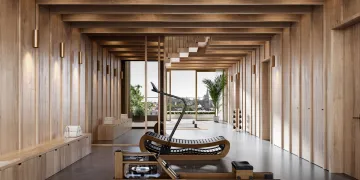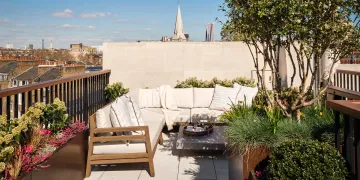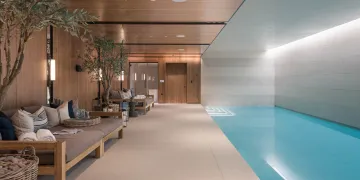When imagining your ideal meditative space, think of a calm sanctuary within your home – a place where comfort and peace can come together. The perfect environment should mirror your discerning taste and dedication to well-being, extending beyond mere functionality. It should be a carefully curated setting crafted to inspire a sense of calm and reflection. Our guide is below.

Selecting the Right Location
Choosing the perfect location for your meditative space is crucial. Look for areas with sufficient natural light to make a connection with the outdoors. With nature in mind, be sure to consider your privacy not just from people but from the elements as a whole. If meditation is a solitary experience for you, you will want to ensure that you are free from distractions and unwanted noise. Whether opting for a dedicated room with expansive windows or a thoughtfully arranged corner with a view, choose a location that aligns with the atmosphere you aim to create.
Furniture and Decor
Enhance your meditation experience with well-crafted and comfortable furnishings. Choose cushions and pillows made from high quality materials to prioritise both comfort and style but be sure to explore your options. Add tasteful decor, such as thoughtfully selective artwork or tapestries.

Integrating Technology
Meditation can often be used to escape the seemingly constant flow of calls and emails. But there are some technologies that can help to improve your sanctuary without compromising its serenity. Smart lighting systems can create the perfect ambiance and sound systems can provide soothing background music or the sounds of nature. Climate control will also ensure your space remains comfortable, allowing you to focus on the present moment with unparalleled ease.
Incorporating Nature
The presence of natural elements can significantly contribute to your overall well-being. Look to incorporate the soothing influence of the outdoors into your space by introducing indoor plants, water features or natural materials. Each of these components can help to create a connection with nature, fostering an atmosphere that is both calming and revitalising.

Mindful Design Principles
Look to incorporate mindful design principles to establish a space that promotes balance and harmony. Minimalist approaches can help simplify the environment and aid with mental clarity. Additionally, consider principles from feng shui to guide the energy flow within the space you have cultivated. Focus on the organisational aspects of your environment to create a sanctuary that encourages clarity of thought and contemplation.

Lighting and Ambiance
Prioritising natural light is easier during the summer months however during winter, look to fixtures that can replicate natural light. Opt for warm colour temperatures to enhance relaxation and always consider adjustable fixtures to allow for total customisation.
By carefully considering these elements, you can craft a serene meditation space that promotes tranquility and focus, supporting your practice effectively.


